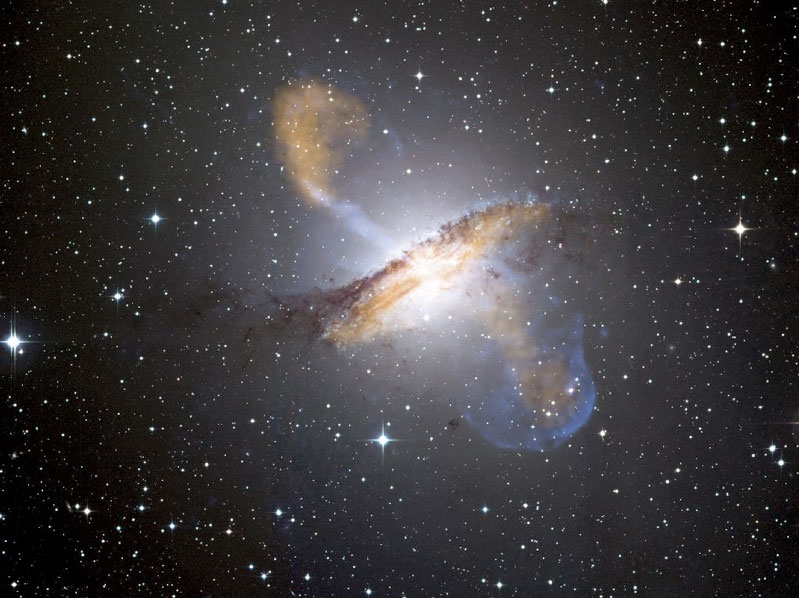Gamma Ray Bursts
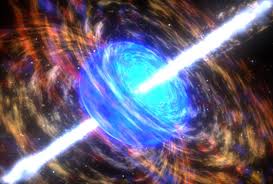
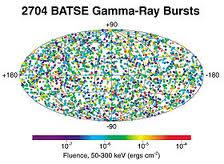 Gamma-ray bursts (GRBs) are flashes of gamma rays related to extremely energetic explosions taking place in distant galaxies. They are the most luminous electromagnetic events known to occur in the universe, exceeding by a factor 10 the typical energies involved in Supernova explosions. Their duration range from tens of millisecond, for the so called Short GRBs, to several minutes for the Long GRBs (with a threshold between the two classes at around 2 seconds). The initial prompt gamma-ray emission is usually followed by a longer-lived "afterglow" at lower energies (from X-rays to radio).
There is a large set of evidences that the Long GRBs, are associated with the death of massive stars. As such they might just be the most violent events among a large class of stellar explosion. On the other hand Short GRBs, are usually associated with an older stellar populations, and their sttistic suggests that they might be the electromagnetic counterpart of binary Neutron Star mergers.
Two plausible central engines for long-duration GRBs have been identified, either an accretion disk around a black hole (the Collapsar model), or a rapidly rotating magnetar. Our research has largely focused on showing that newly formed magnetars, if rotating rapidly, will naturally produce collimated relativistic outflows as the neutron star cools in the first ~ 100 sec of its life.
Gamma-ray bursts (GRBs) are flashes of gamma rays related to extremely energetic explosions taking place in distant galaxies. They are the most luminous electromagnetic events known to occur in the universe, exceeding by a factor 10 the typical energies involved in Supernova explosions. Their duration range from tens of millisecond, for the so called Short GRBs, to several minutes for the Long GRBs (with a threshold between the two classes at around 2 seconds). The initial prompt gamma-ray emission is usually followed by a longer-lived "afterglow" at lower energies (from X-rays to radio).
There is a large set of evidences that the Long GRBs, are associated with the death of massive stars. As such they might just be the most violent events among a large class of stellar explosion. On the other hand Short GRBs, are usually associated with an older stellar populations, and their sttistic suggests that they might be the electromagnetic counterpart of binary Neutron Star mergers.
Two plausible central engines for long-duration GRBs have been identified, either an accretion disk around a black hole (the Collapsar model), or a rapidly rotating magnetar. Our research has largely focused on showing that newly formed magnetars, if rotating rapidly, will naturally produce collimated relativistic outflows as the neutron star cools in the first ~ 100 sec of its life.
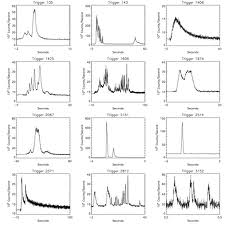 The association of GRBs with SN clearly show that a correct understanding of one cannot come without a proper understanding of the other. Research on GRB engines have thus important implications in the more general context of core collapse, supernovae and the birth of compact objects. The role played by a possible central source in triggering the explosion, and the effects of magnetic field (either amplified in the collapse of produced by dynamos) have started to be tackled only recently. Moreover it is important to understand how the outflows produced by the central engine interacts with the surrounding medium, what feedback is expected, and the differences in observational signatures. Obviously results and techniques developed for the case of neutron-star winds have a much broader applicability for the general problem of relativistic outflows from compact sources.
Recent results about the SN-GRB connection have clearly shown that GRBs might provide important informations on the very dynamics involved in the collapse, and short of GW they might be our only way to investigate the formation of compact remnants as BH or NS. The evolution of these systems involves a large dynamic range both in space (from the compact object to the outer stellar layers) and time (from milliseconds to seconds), and a complexity microphysics (radiation pressure, neutrino heating and cooling, nuclear processes). It has been recognized in recent years that magnetic field can play a key role in the core collapse and during the supernova explosion. Numerical techniques and computational facilities have been developed to a point where it is possible to investigate such multidimensional phenomena.
The association of GRBs with SN clearly show that a correct understanding of one cannot come without a proper understanding of the other. Research on GRB engines have thus important implications in the more general context of core collapse, supernovae and the birth of compact objects. The role played by a possible central source in triggering the explosion, and the effects of magnetic field (either amplified in the collapse of produced by dynamos) have started to be tackled only recently. Moreover it is important to understand how the outflows produced by the central engine interacts with the surrounding medium, what feedback is expected, and the differences in observational signatures. Obviously results and techniques developed for the case of neutron-star winds have a much broader applicability for the general problem of relativistic outflows from compact sources.
Recent results about the SN-GRB connection have clearly shown that GRBs might provide important informations on the very dynamics involved in the collapse, and short of GW they might be our only way to investigate the formation of compact remnants as BH or NS. The evolution of these systems involves a large dynamic range both in space (from the compact object to the outer stellar layers) and time (from milliseconds to seconds), and a complexity microphysics (radiation pressure, neutrino heating and cooling, nuclear processes). It has been recognized in recent years that magnetic field can play a key role in the core collapse and during the supernova explosion. Numerical techniques and computational facilities have been developed to a point where it is possible to investigate such multidimensional phenomena.
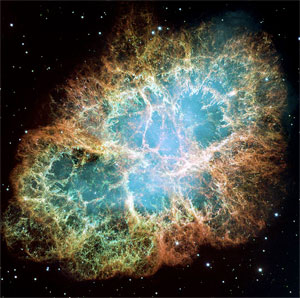
 Arcetri High Energy Group
Arcetri High Energy Group 